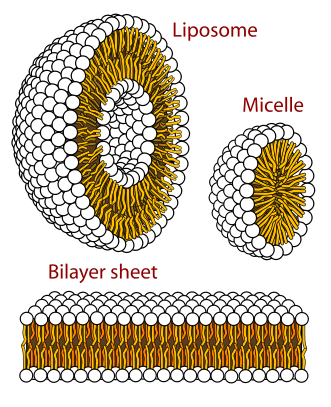The Power Of Krill Oil And Phospholipids
Multiple clinical trials have shown us long chain poly-unsaturated fatty acids are essential to improving certain blood markers and allowing us to maintain a healthy body.
They have been linked to the prevention of some cancers, improved immune system, eye health, as well as cardiovascular disease.
Most individuals do not consume enough of these Omega 3 fats through their own diet so they rely on supplementation to obtain adequate quantities. There are two main sources of these fatty acids through supplementation. One form is traditional fish oil in a triglyceride solution. This is the most common and what most people are familiar with.
The other form is krill oil in a phospholipid solution. This is gaining popularity because studies are showing that krill oil has more benefit with a lower quantity because it is more efficiently utilized by the body. Some researchers believe because of this phospholipid solution.
There are many different types of phospholipids, but the EPA and DHA in krill oil is primarily in a phospholipid form called phosphatidylcholines (PC).
Cell membranes require an essential bilayer to the membrane and phospholipids allow the formation of this bilayer. This helps dietary phospholipids with the transport of omega 3 fatty acids through the body and into various cell membranes.

Fish oil is in a triglyceride solution and is recognized as a good source of omega 3 fats, but they have different functions in the body. This many believe requires you to consume more to get the same benefit as a lower dose of krill oil.
Triglycerides are primarily used as energy or your body will store it for use at a later time. As a result you must consume enough of these to compensate for the potential fats burned as energy or what your body wants to store as fat.
How Does Krill Become Packed With Omega 3 Fats?
Krill feed on microscopic algae that protect omega 3 fatty acids. This algae also produces the antioxidant astaxanthin that you find in krill oil and not in conventional fish oil. The astaxanthin is what gives krill their recognizable red color.
Astaxanthin is also gaining in popularity because of its powerful benefits as an antioxidant and even a potential fat loss agent. Because krill feed on this algae that is at the very bottom of the food chain there is no accumulation of contaminants like you find with conventional fish oil.
Researchers have been comparing krill oil and fish oil in various studies to determine what differences there are and why. Here are some of the recent studies comparing the two.
This first study was validation of an older study conducted with rats. In this recent human study it showed that krill oil may help fight metabolic symptoms like higher fat levels in your heart and liver more efficiently than conventional fish oil.
It also demonstrated that only krill oil and not fish oil or olive oil had a significant reduction in levels of a group of lipids and receptors that are elevated in obese people.
The researchers stated that the krill oil was more efficient in reducing these endocannabinoid levels in the plasma despite the fact that the EPH and DHA concentrations were comparable and even slightly lower in the krill oil group.
The study consisted of 63 overweight and obese subjects. They randomly received either 2 grams of krill oil, 2 grams of fish oil or 2 grams of olive oil for four weeks.
The krill oil provided 206 mg of EPA and 103 mg of DHA while the fish oil provided 195 mg of EPA and 195 mg of DHA.
The results showed that krill oil provided a significant reduction in 2-AG levels and there were no significant reductions in those participants that consumed fish oil or olive oil.
Another study was published in the Springer journal Lipids and its focus was to investigate the effects of krill oil and fish oil on serum lipids and also markers of oxidative stress and inflammation. What they wanted to see was whether the different forms- triglyceride and phospholipids of omega 3 solutions made a difference in the levels of EPA and DHA.
A total of 113 participants with normal or slightly elevated blood cholesterol were randomly put into 3 groups. Forty of the participants were given 3 capsules of 1.8 grams of fish oil per day with 864mg of EPA and DHA for seven weeks. Thirty six of the participants were given 6 capsules of 3 grams of krill oil per day with a combined 543 mg of EPA and DHA for seven weeks. The remaining participants received no supplements and were the control group.
What they found was that there was a significant increase in plasma EPA and DHA in both the krill oil and fish oil groups when compared to the control group. They also saw similar results with both groups in regards to the serum lipids and the markers for oxidative stress and inflammation.
What they did confirm though is that a lower dose of EPA and DHA achieves the same results when taking krill oil, which is phospholipids compared to the triglyceride form of fish oil and other omega 3 products. They also found in the krill oil group that there was a significant improvement of the HDL cholesterol/Triglyceride ratio.
This adds validity to some of the studies already conducted on krill oil and will lead to even further studies that krill oil in a phospholipid form appears to be better for utilization and that you can use less EPA and DHA when in krill oil to achieve the same results as a omega 3 fish oil that is in triglycerides.
In this third study, which is similar to the first study they measure the rise in EPA and DHA concentrations in the body.
The researchers recruited 76 overweight and obese men and women to take part in a randomized double-blind parallel arm trial.
The participants were randomly assigned to receive capsules containing 2 grams per day of krill oil, fish oil, or the control (olive oil) for four weeks.
At the end of the four weeks the researchers reported that levels of EPA and DHA concentrations increased significantly more following the krill oil supplementation than those following the fish oil or control supplementation. EPA and DHA levels rose by an average of 178 and 90 micromoles per liter of plasma in the krill oil group.
This is compared to only 132 and 150 micromoles per liter of plasma in the fish oil group and only 3 and 1.1 micromoles in the control group.
The daily quantity of EPA provided in the krill was 216 mg and 212 mg in the fish oil, which are comparable. However, the DHA in the krill group was only 90 mg/d, which was about half of what was provided in the fish oil (178 mg/d).
The average plasma EPA concentration at the end of the treatment period was also somewhat higher in the krill oil group compared with the fish oil group. (377 versus 293 micromoles per liter). The average plasma DHA concentrations were comparable for both groups (476 versus 478 micromoles per liter) despite the krill group only consuming half of the DHA that was provided in the fish oil group.
What the researchers have been finding is that krill oil even though it contains less EPA and DHA per comparable dose with fish oil is more powerful and beneficial.
Before you go and buy more fish oil make sure you read this vital information about fish oil.
The Shocking Truth About The FISH OIL You Are Taking Now. Warning: Do NOT Take Any Fish Oil Until You Read This News
Is Your Doctor Hiding This From You? >>
About Jayson Hunter & Jaylab Pro

Jaylab Pro was founded by Registered Dietitian Jayson Hunter. Jayson has been recognized as one of America's foremost weight loss experts by America's Premier Experts™. He has also been featured in USA Today for this accomplishment. Jayson is also a best-selling author having co-authored multiple books in health & fitness and business growth. Jayson and the Jaylab Pro team are proud to create content that helps improve the lives of millions of people around the world. We hope you enjoy it just as much as others have.
 If you order a JayLabPro SmartShip product or any Combo Package, we will automatically ship you a new supply of the product or products you have ordered every month, starting 30 days after your initial order is shipped, and continuing until you cancel. The credit card you are using today will be billed the lowest available price for those product or products when your order is shipped, but shipping will be FREE. You may log into your customer account or call our customer service department toll-free at 1-888-9GETPRO (1-888-943-8776) between the hours of 8am – 9pm EST Mon-Fri to cancel future shipments, customize the timing of your shipments, or change the credit card used for billing.
If you order a JayLabPro SmartShip product or any Combo Package, we will automatically ship you a new supply of the product or products you have ordered every month, starting 30 days after your initial order is shipped, and continuing until you cancel. The credit card you are using today will be billed the lowest available price for those product or products when your order is shipped, but shipping will be FREE. You may log into your customer account or call our customer service department toll-free at 1-888-9GETPRO (1-888-943-8776) between the hours of 8am – 9pm EST Mon-Fri to cancel future shipments, customize the timing of your shipments, or change the credit card used for billing.









